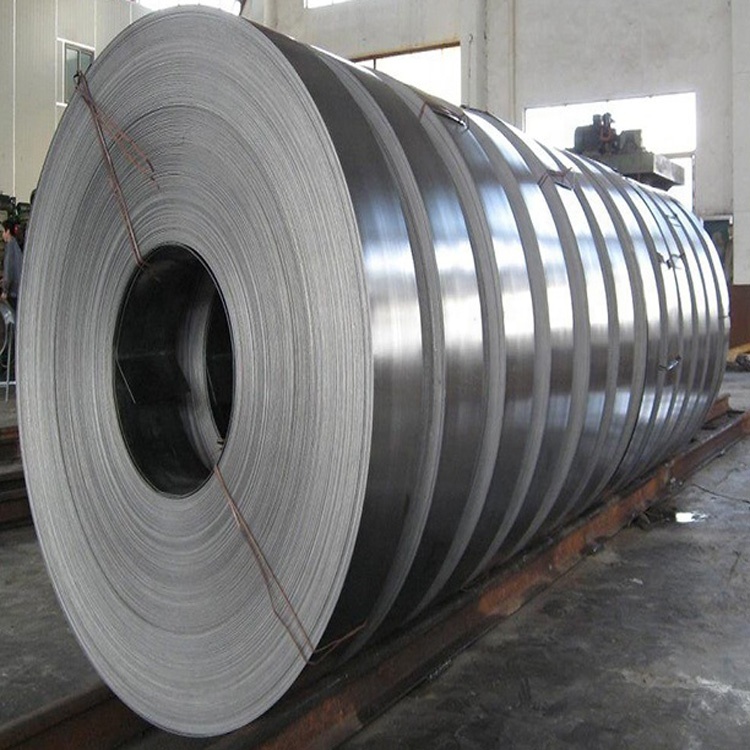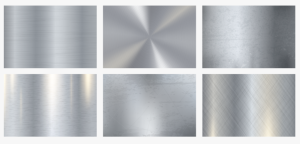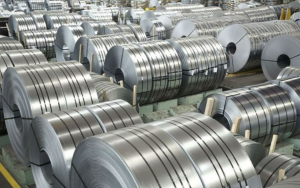1. Chemical coloring method
①High temperature coloring method.
This coloring method has already been applied in the industry, and it can be divided into two types, one is the tempering method, that is to say, at a certain high temperature, the surface of the 430 stainless steel strip is oxidized to golden yellow by air. The other is to immerse the 430 stainless steel strip in a molten bath of dichromate. Through oxidation, the surface of the 430 stainless steel strip can have a dull but firm black film. During operation, the temperature is controlled at 450~500°C. The soaking time is controlled for 20-30 minutes.
② low temperature coloring method.
It can be mainly divided into chemical coloring method and electrochemical coloring method. The chemical coloring method can be subdivided into alkaline chemical coloring method and acidic chemical coloring method according to the difference of acidity and alkalinity.
When the alkaline chemical coloring method is used, the 430 stainless steel strip needs to be immersed in an aqueous solution containing sodium hydroxide, an oxidizing agent and a reducing agent. Note that it is not necessary to remove the oxide film on the surface of the steel strip before coloring. A layer of oxide film is regenerated on the surface of the oxide film. When the oxide film thickens, the color of the surface of the 430 stainless steel strip will gradually change, from yellow to brown at the beginning, then blue, and finally dark blue.
The vulcanization method is also a commonly used coloring method in the alkaline chemical method. After the surface of the 430 stainless steel strip is activated, it is soaked in a solution containing sodium hydroxide and sulfide. The surface turns black, but this method has poor corrosion resistance, and generally needs to be covered with varnish paint later.
The acid chemical coloring method is generally improved on the basis of the Inko method. Coloring base fluids use chromic acid and sulfuric acid.
Electrochemical coloring methods can be subdivided into current methods and potentiometric methods. The color can be well controlled by using the electrochemical coloring method. When coloring, it is not affected by the surface condition of the 430 stainless steel strip, and there is no high requirement on the temperature, and the pollution is relatively small.
2. Organic matter coating and coloring method.
By coating and coloring the surface of the 430 stainless steel strip, the color of the surface of the steel strip can be changed, and transparent or opaque coloring paint can be coated on the steel strip. In the early days, this method was limited in use because of the poor adhesion between the steel strip and the coating.
With the advancement of technology, the coating technology continues to improve. Coating has become a good coloring method for 430 stainless steel strips. The important factors for coating 430 stainless steel strips are the choice of paint and the treatment before coloring. If you want to prolong the coloring For the best effect, you can use silicon-modified polyester resin, acrylic resin and epoxy resin to share the coating.
3. Enamel or cloisonne coloring method.
The enamel or cloisonne coloring method can make the surface of the 430 stainless steel strip produce a smooth and glossy surface effect similar to glass, and even make the surface of the 430 stainless steel strip show the effect of color patterns, but due to the influence of the coating and the steel strip For the problem of adhesion, generally this approach is only used for handicrafts.
4. Plated non-ferrous metal coloring method.
Plating non-ferrous metals on 430 stainless steel strips, such as gold plating, black chrome plating, and copper plating, is commonly used in industry.




